It’s been a while since I’ve blogged about any of our hiking adventures. I completely lost steam as I entered grad school over a year ago now. In case you’re wondering, I’m working on getting a Master of Forestry degree from Duke University. I gave up a perfectly good career as a hiking bum to do this, so it better be worth it.
“Write a blog and I’ll read it,” my parents said. So here I am.
This summer, as has become somewhat of an annual tradition at this point, John and I decided to do a ~200 mile loop with our friend Donner (whom we met on the AT 12 years ago now) somewhere out West during the heat of the summer here in the Southeast to avoid the muggy 90-100 degree days.
Day 1:
After landing in Seattle, we met up with Donner and made our way to Stehekin, where it was almost 110 degrees. What the heck.
Getting from the airport took more hours of planning than executing, and involved a one way rental car followed by a bus followed by a ferry down Lake Chelan to Stehekin where we got a shuttle to the trailhead. We did all that in one day and even hiked 5 miles at the end of it, feeling completely jet lagged. In Stehekin we made the wise decision to jump into Lake Chelan as the nausea from heat exhaustion was taking hold.
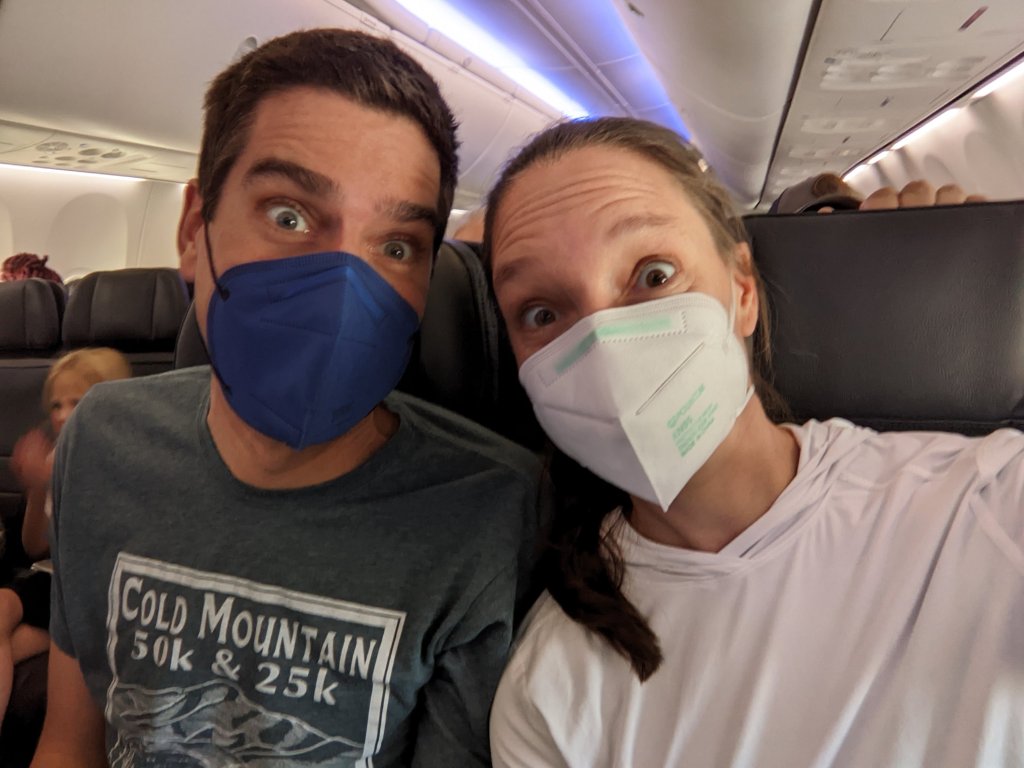

The shuttle to the trailhead stopped at the Stehekin bakery, something we remembered from our thru-hike of the PCT 8 years ago. Our shuttle was full of boisterous thru-hikers. Our loop would include the PCT, but we would quickly veer off to hike part of the alternate route we took during our SOBO thru-hike so as to complete the loop.
Day 2:
We decided to take advantage of our jet-lag and wake up before the crack of dawn and get some miles in during the cool morning hours. The 100-110 degree weather was supposed to persist for a couple of days before cooling down to a balmy 90-something degrees. Because we were hiking in North Cascades National Park, we had to reserve our campsites for the first 4 or 5 nights before we left the park for Forest Service land, where we could camp wherever we pleased. Luckily we had planned a few easy days to start out so that we could “warm up.” The first day involved climbing from barely 1000ft above sea level over Park Creek Pass, which brought us up over 6000ft where we could hang out during the heat of the day. Higher elevations offer cooler temperatures.

As we climbed up the valley, it was already too warm. The sun beat down on us, and I huffed and puffed through overgrown trail trying to keep up with the guys. I was having an asthma attack. I couldn’t catch my breath, and my breathing sounded awful. I puffed on my emergency inhaler and tried to continue since there were swarms of flies the size of house flies landing on us and generally annoying the crap out of us. The wheezing continued. I stopped again. “Sorry guys…” I said, putting my head between my knees. The flies landed on us by the hundred, but they were slow, and kind of fun to kill. John and Donner spent a few minutes trying to see how many they could squish at once while I tried to breathe more slowly.
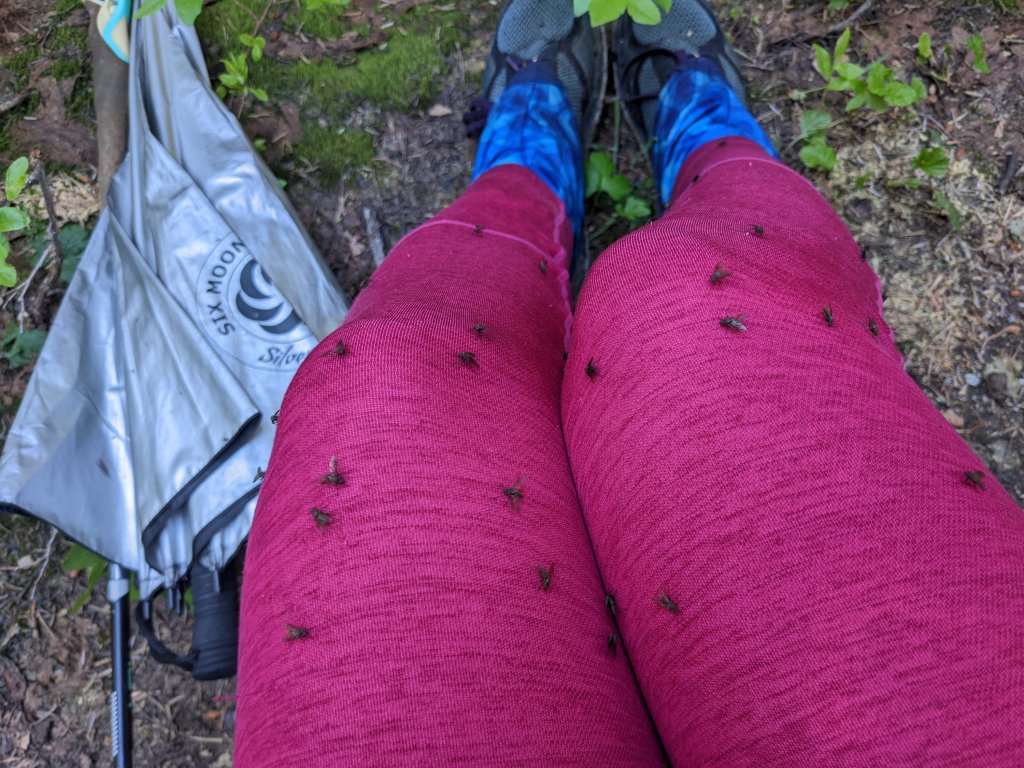
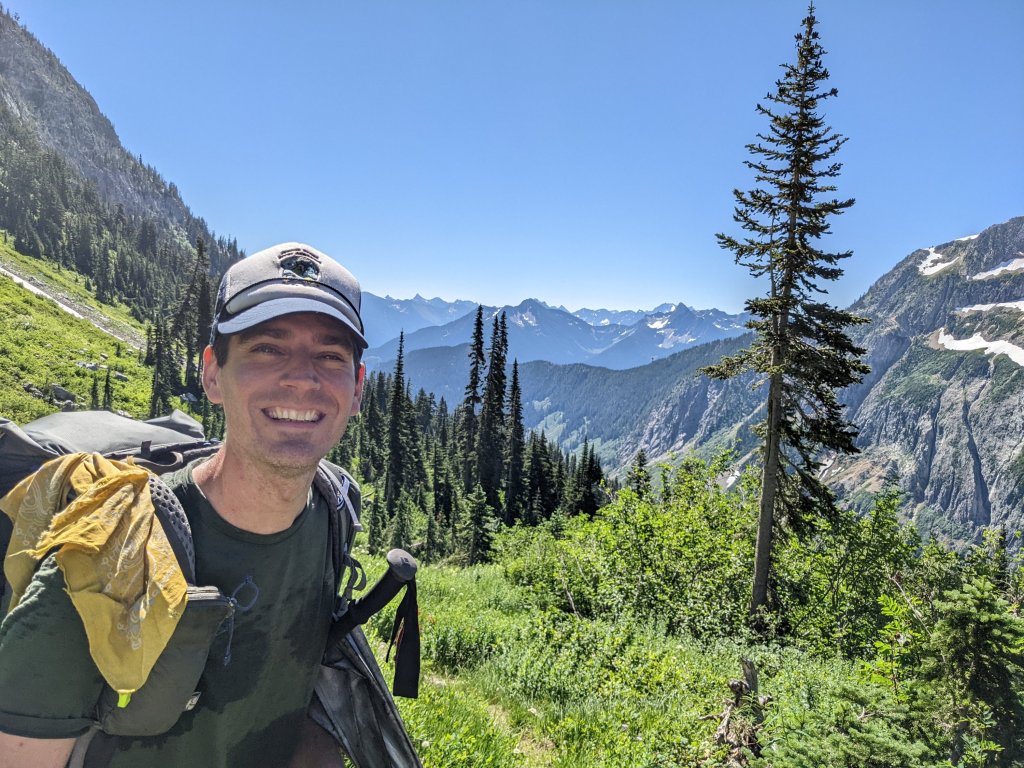
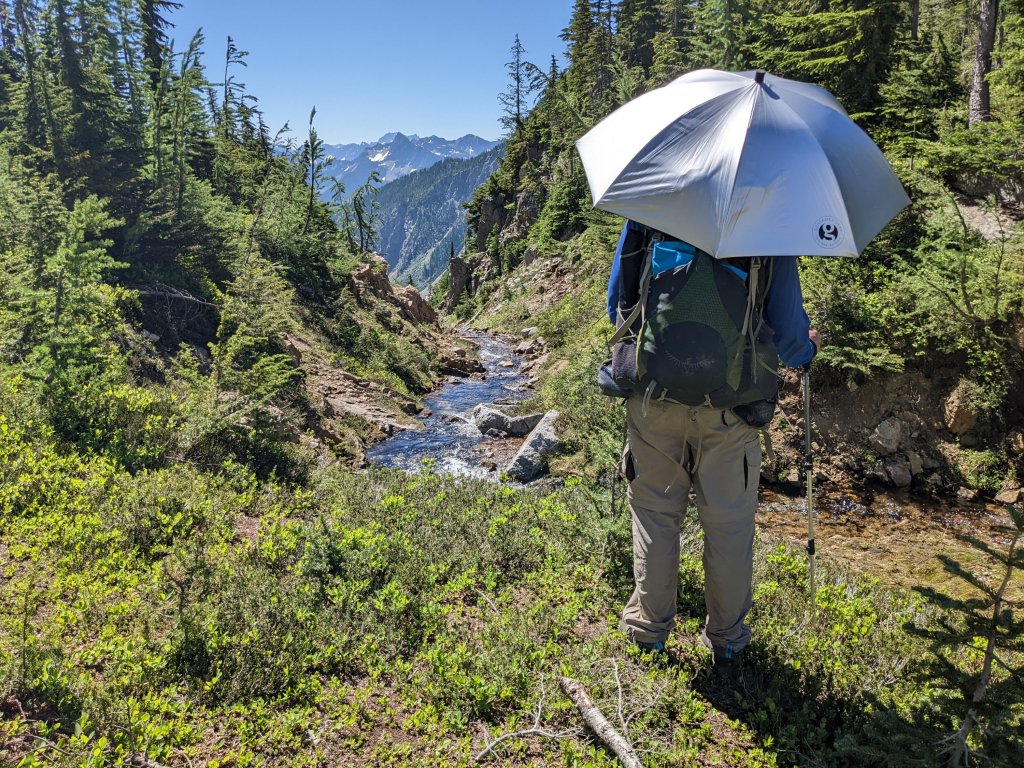
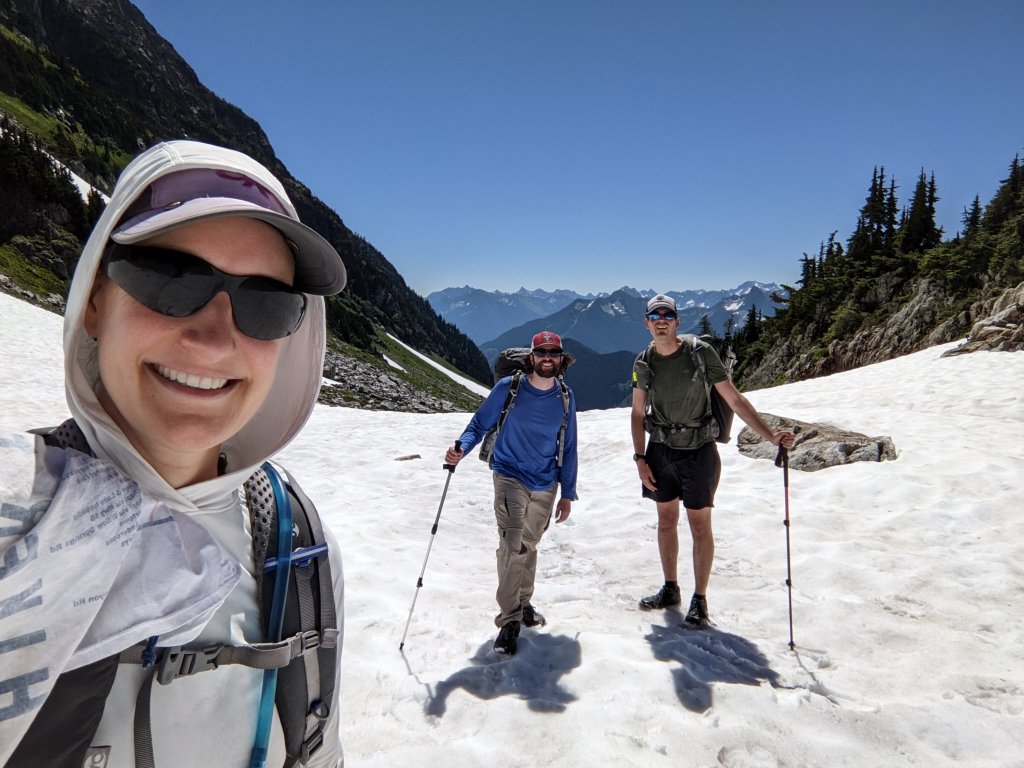
We continued upward, and while the flies were still annoying us, we were soon introduced to a swarm, or a wave, or maybe a typhoon of caterpillars. I don’t know what the right word is for millions upon millions of caterpillars, but the result on the landscape was horrific. The entire hillside was defoliated, and in the middle of the trail, where we were walking on what looked like clumpy dirt was actually an entire layer of deceased caterpillars. It was disgusting. The trail was still somewhat overgrown, and every bit of defoliated twig or branch overhanging the trail was covered in caterpillars. When we brushed up against the vegetation, caterpillars often stuck to our legs, socks, shoes, and shoelaces. When the vegetation was higher, we got caterpillars on our shirts, backpacks and even occasionally in our hair. We later found out that these were Western Tent Caterpillars, and indeed there are outbreaks of these creatures roughly every 10 years. The resulting defoliation can be seen from low flying aircraft.


We reached the pass and found a large patch of snow to play on. This snow was much more welcoming compared to the snow we found here a month earlier 8 years ago where we had to wear microspikes and use our ice axes to keep from falling thousands of feet. In fact, that experience left such a huge impression on us that John decided to carry two pairs of microspikes during this trip in case we encountered any scary snow.
We found the shade of some rocks with a slight breeze to hang out in for a few hours, murdering a few flies every now and then when the wind died down, and caught up on life with Donner.
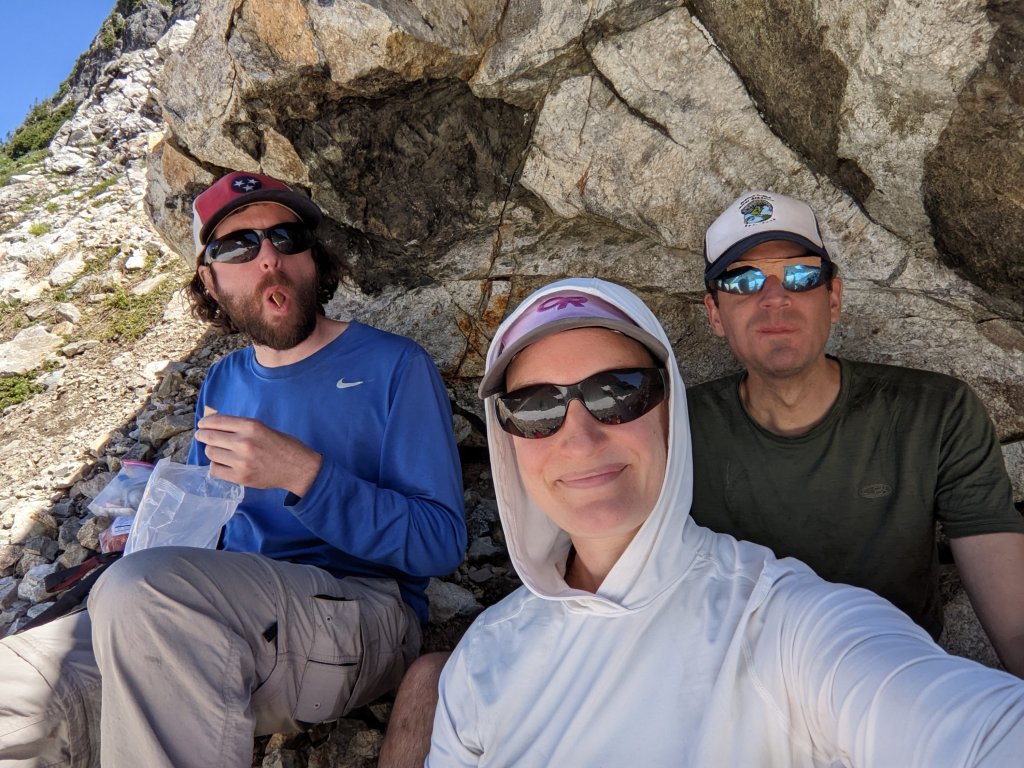
The other side of the pass was much more pleasant – not overgrown, no caterpillars, and I even felt like the flies were a little less persistent. It felt like a long way down to camp, but when we got there it was still too hot.
Day 3:
In the morning John showed us a waterfall near where he collected water the night before. There’s a reason this park is called Cascade National Park. I’m sure many of the waterfalls we saw on this trip have no name. We hadn’t seen a single other hiker after leaving the PCT yesterday morning, so we were very surprised to run into a Park Ranger. We chatted with her for a few minutes, and showed her our permit. I should have taken this as a hint that as we were walking towards Route 20 there would be a few more people on the trail. But I gave it no thought, and decided to pee right next to the trail just as a trail runner came zipping down the trail next to me. Oops! Luckily I’ll never see him again. I hope.
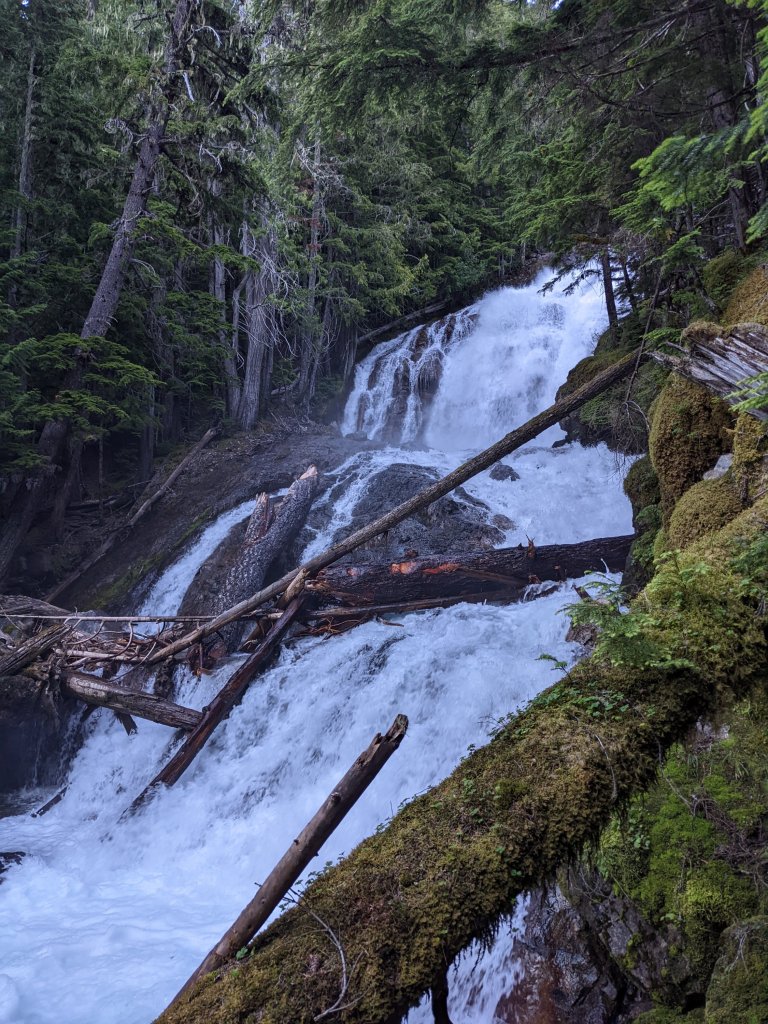
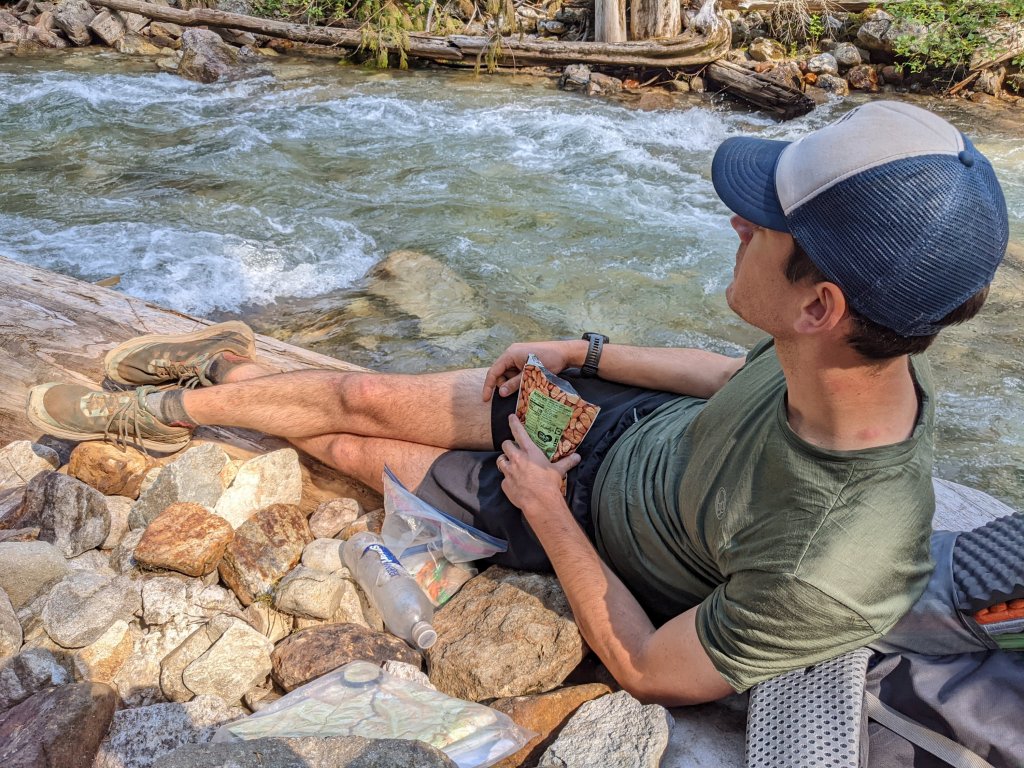
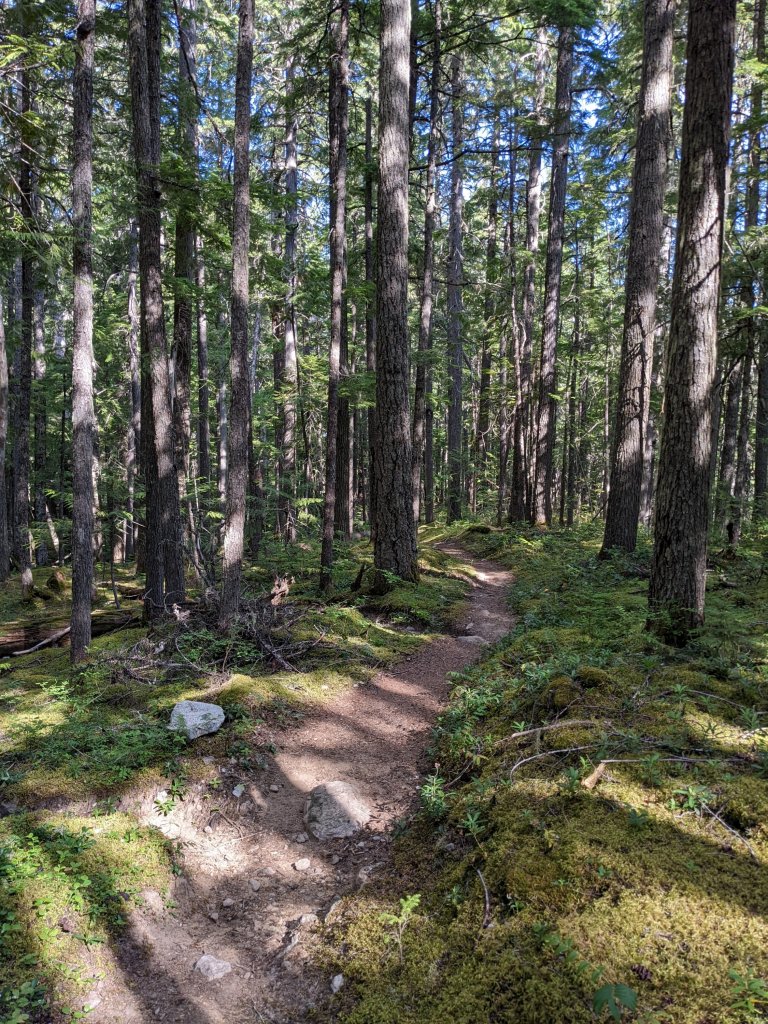
As the day wore on, the heat became unbearable, and every time we came to a stream we took off our shirts and our hats and soaked them in water before putting them back on again. Staying wet was the only way to stay cool. Since we had another short day, we also rested next to streams, where the glacial water helped cool down the air directly around the stream. We had another pass to climb today: 4th of July Pass, and we waited until the evening to brave the climb, hoping it would be just a little bit cooler, and the sun would be just a little less intense. I was happy when I didn’t get an asthma attack going up 4th of July pass, and felt really good about that. At the top I found a lovely two bedroom (two flat spots), one bathroom (tree) camping spot with a living room (logs to sit on) and a sun room (sunny spot) for drying our shirts out, but John and Donner decided it was a little too dusty there when the wind blew, so we found a slightly smaller set of accommodations a few feet away amongst the rocks.
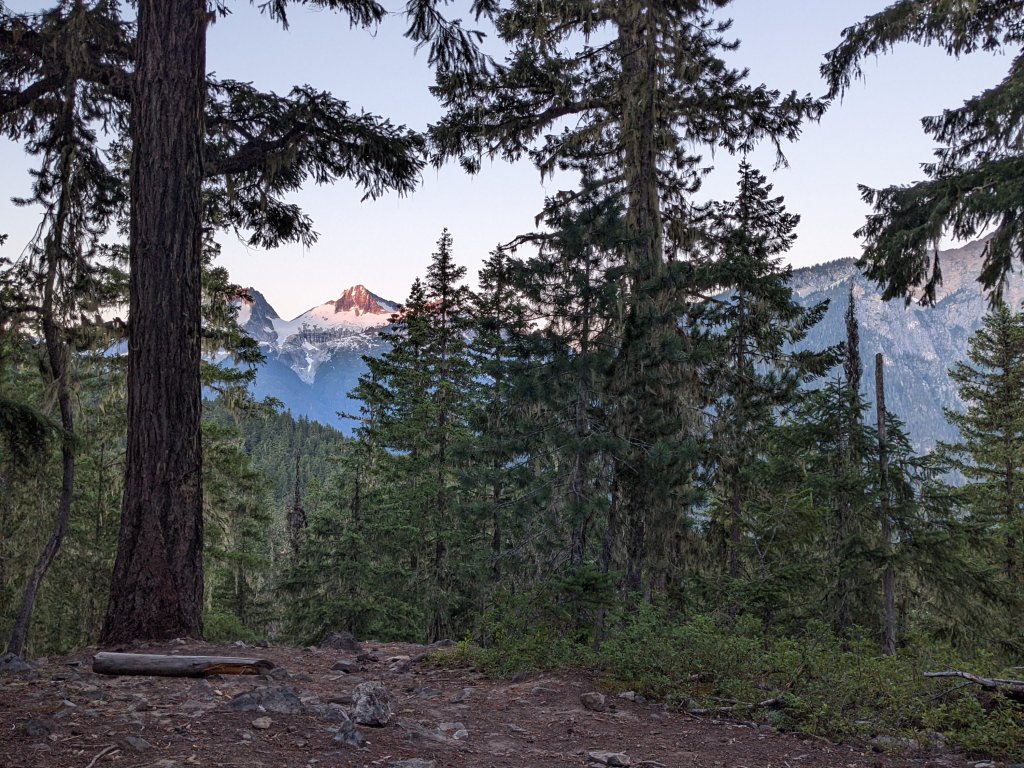
Day 4:
We packed up while watching the sun rise and the hiked down Panther Creek. They had cut back some of the vegetation, which was nice, as this section of trail obviously is prone to being very overgrown. We passed an established campsite where we were all able to use the toilet. Toilets in these primitive campsites consist of a hole in the ground with a wooden toilet seat to sit on, and no walls. You have to sort of shout down the privy trail to ask if someone is there so that you don’t just walk up on them. Near the toilet there was a beautiful waterfall where I think there was a huge snow bridge when we came through here 8 years ago.

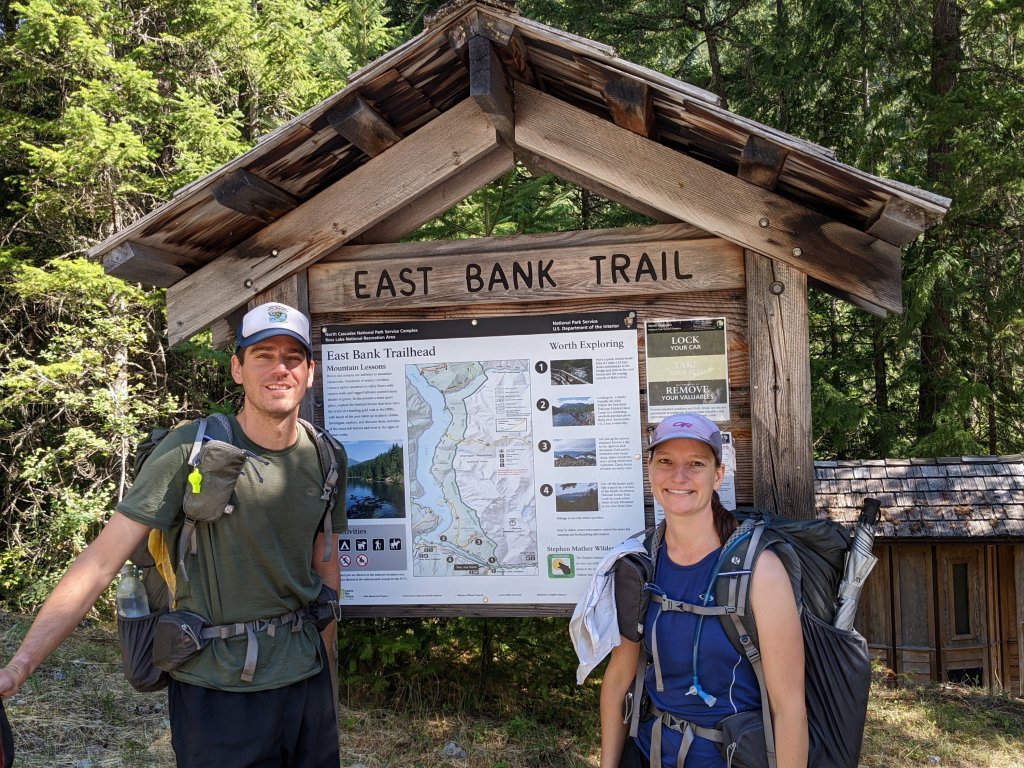
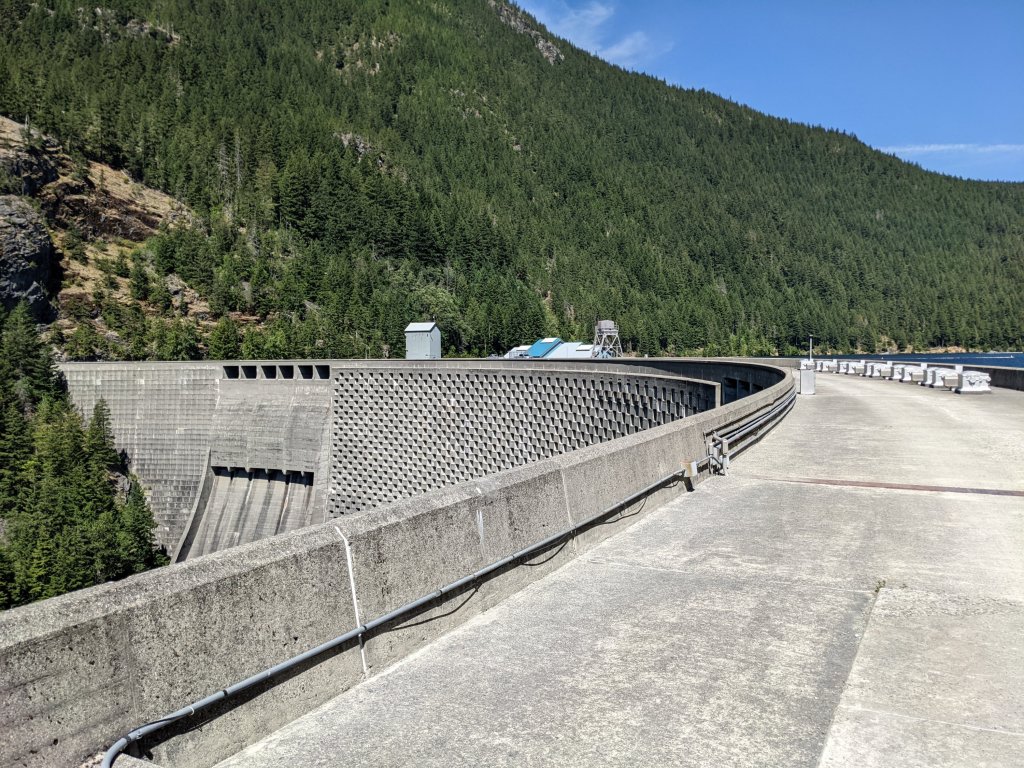
We had an annoying PUD (pointless up and down) before arriving at Route 20. There was an amazingly well maintained trail just downhill from the highway that clearly very few people walk on that we were able to take to get to Ross Lake. We walked over the dam at the base of the lake and wandered over to Ross Lake Resort, where we had sent a resupply package. This resort was not what I had pictured in my mind when we decided to use this spot as a resupply, but I wasn’t complaining. The resort consisted of a series of buildings that were floating on top of the lake on wooden platforms, only accessible by boat or by trail. I was annoyed that it cost us $20 per box (we had two boxes) to pick up our packages, but the lady explained the hassle involved in getting these boxes to the resort. “Someone has to pick them up at our PO box, drive them to Chelan, load them on the boat, and then offload them here. You have no idea how many hands these boxes have to go through.” The lady said, taking our credit card.
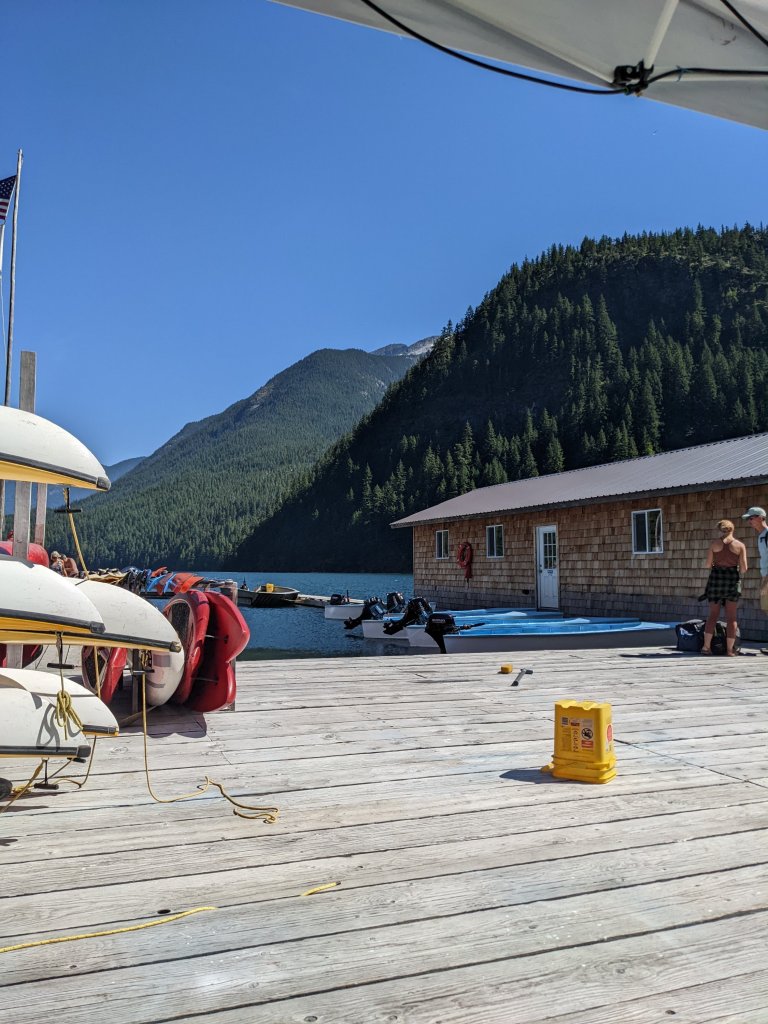
We were surprised to find a soda machine with $1 sodas floating around next to one of the buildings (how do they get these here?), so we indulged before heading out on an expensive water taxi to the other side of the lake where we would be dropped off at a point along the East Bank Trail to continue our loop. We could have walked there, but it would have added at least 10 miles, most of which would be repeated miles, to a section that was already 100 miles long without a resupply option. Paying money to cut back on miles feels a little weird from a hiker’s prospective, but such is life.
We walked a few more miles to camp at Roland Creek where it was still too hot. Some mosquitoes decided to come out and chase us into our tent.
Stay tuned – more to come!